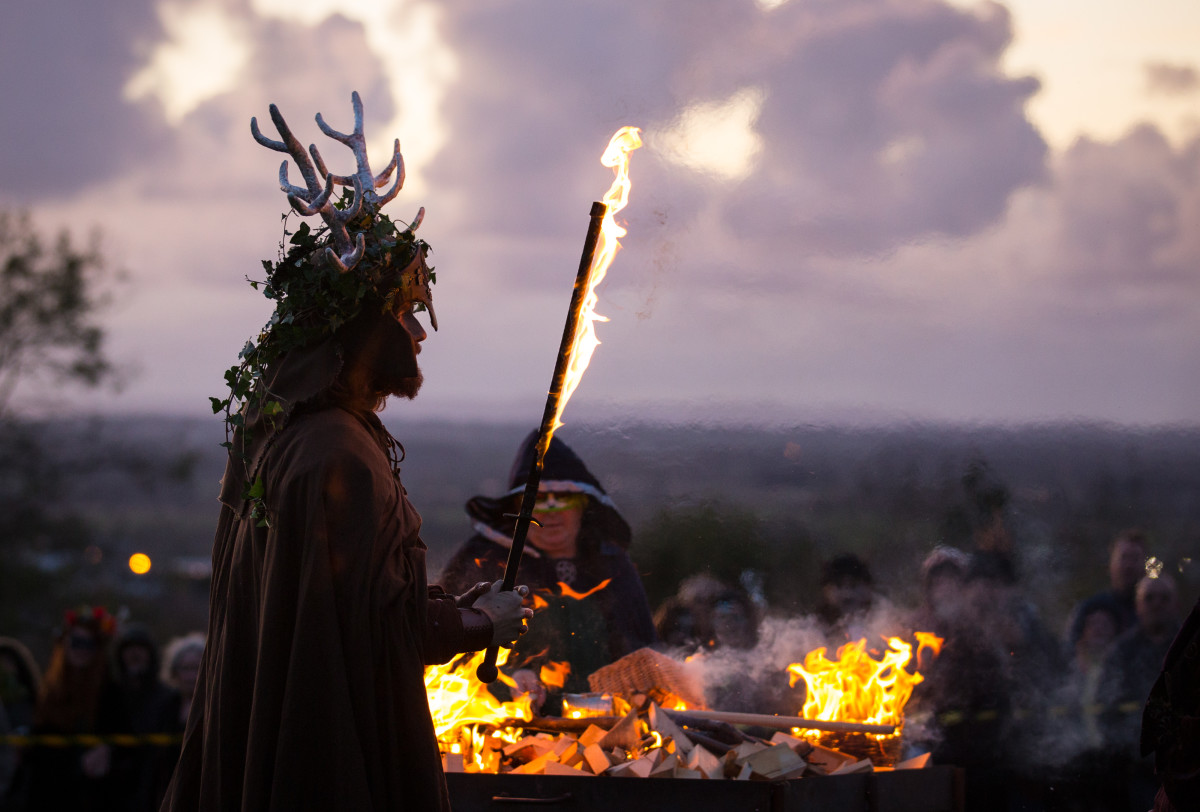Every culture on Earth since the agricultural revolution has celebrated the harvest in some form or another. From the Chinese Mid-Autumn Festival to the Roman Cerealia, the end of the harvest and beginning of winter is an almost universal experience. However, the harvest is not just a celebration of the year’s bounty; it marks the beginning of winter’s scarcity, and the malevolent forces said to come with it. This interrelation of life bringing harvest and deadly winter is one of the underlying themes of America’s fourth favorite holiday, Halloween. Just like the nation it comes from, the traditions of Halloween are an amalgamation of various cultural traditions. Nevertheless, in this article we will explore the origins of the spooky season and how it has evolved today.
In the Iron Age, the Celtic people of modern-day Ireland celebrated several festivals to mark the seasons of the year with the harvest festival taking place roughly between the end of October and early November. This was Samhain (SOW-in), a day’s long festival celebrated with feasting, drinking, and massive bonfires believed to appease the otherworldly spirits that roamed the world on Samhain night. The mythological origins of the festival are difficult to trace due to the Irish mythological tradition being largely oral until the arrival of Christianity in the 5th century. However, the celebration of Samhain is mentioned several times in the various cycles of Irish myth, albeit without much mythological context for its origins. The first attempt at Christianizing the holiday came in 609 CE, when Pope Boniface IV declared May 13th All Saints Day or All Hallows Day to commemorate all the Christian martyrs. Two centuries later when Pope Gregory III moved the holiday to November 1st the homage paid to martyrs was syncretized with the Samhain appeasement of otherworldly spirits. Over the following centuries October 31st settled into its role as the eve of All Saint’s Day, though the traditions of Samhain did not disappear so easily.
By the 18th century as the first waves of Irish settlers reached the Americas the once deeply spiritual traditions of Samhain had devolved into simple folk customs that immigrants carried with them to the new world. Despite America’s Protestant roots, Catholic pockets in Maryland and the South continued the Samhain tradition of dressing up in scary costumes to disguise the malicious forces said to walk the Earth on Samhain night. The spirits—or aos sí as they are called in Ireland—that young people dressed up as were known as tricksters which inspired rampant pranking on All Hallows Eve. This, combined with the practice of giving soul cakes to visitors on All Hallows Tide gradually evolved into our modern practices of dressing up and going trick-or-treating. However, this begs the question of what became of the old Samhain beliefs both in Ireland and here in America.
Beginning in the late 19th century there was a Celtic revival across Northwestern Europe that renewed interest in Celtic art, literature, and history. In Ireland in particular this movement was brought on by the country’s economic and political development throughout the century. Historians such as Charles O’Connor, Sir John Rhys, and Mark Williams dedicated themselves to uncovering the pre-Christian history of Ireland. In doing so they reintroduced aspects of pagan Celtic beliefs into society. There are two primary groups of modern pagans who celebrate versions of Samhain. The more popular of the two is Wicca, founded in England in the early 20th century. Wiccans celebrate Samhain, with bonfires, offerings for the dead, and divination. These practices, while reflective of what we know about ancient Samhain celebrations, are filtered through the Wiccan theology to suit their beliefs. On the other hand, we have Celtic reconstructionists who try to recreate the ancient Celtic practices as accurately as possible by adjusting the celebration date to reflect the actual climate shift to winter. Similar to Wiccans they celebrate with bonfires as this is one of the most well documented practices of ancient Celtic celebrations.
We would be remiss to overlook the largest group keeping the spirit of Samhain alive; you. Yes, each of you plays a part in the continued existence of this fascinating holiday. Every time you carve a gourd or put on a mask or even do some Halloween pranking, you are taking part in an ancient and ever evolving tradition. One that has crossed oceans and blended with other cultural practices to give us the holiday we revel in today. So, whether you will be attending a Samhain bonfire, making offerings to departed loved ones, or just watching horror movies with friends, remember that no culture is immune to the march of time, but they can survive in the most unexpected places.







































































































